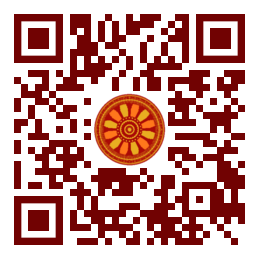
:: International Transaction Journal of Engineering, Management, & Applied Sciences & Technologies
http://TuEngr.com

ISSN 2228-9860
eISSN 1906-9642
CODEN: ITJEA8
FEATURE PEER-REVIEWED ARTICLE
Vol.13(1)(2022) |
Influences of Intangible Needs on the Architectural Expression of Tangible Culture Heritage: Comparative Study between Mosque and Church
 Ahmed Abdulwahid Dhannoon, Oday Qusay Abdulqader, Amer Abdullah Al-Azawi (Architectural Engineering Department, College of Engineering, University of Mosul, IRAQ).
Ahmed Abdulwahid Dhannoon, Oday Qusay Abdulqader, Amer Abdullah Al-Azawi (Architectural Engineering Department, College of Engineering, University of Mosul, IRAQ).
Disciplinary: Architecture, Religion & Believe, Heritage Study.
Keywords: Religious building; Architectural religious expression; Intangible needs; Intangible cultural heritage; Mosque architecture; Church architecture; Abstracted symbol; Building layout; Intangible heritage.
AbstractThe architectural buildings are the mirror which the cultures reflect the interiority in tangible form. This study clarifies the dialectic of the differences between Islamic and Western architectures and interior design, especially in the way of expression of religious needs. Moreover, it focuses on the heritage buildings that included religious performances. The study's problem is: "There is a gap of knowledge and unclear image of the influences of intangible heritage on the architectural and interior outcomes". Literature focuses on the Islamic and western architecture themes, including architectural identity, building typology, and architecture and interior elements. The research question of the current study is: "What are the differences between mosque and church in terms of the influences of intangible cultural heritage". Therefore, the study aims to determine the intangible factors of the Mosque and the Church's architectural and interior design. The qualitative approach is adopted to reach the study's aim, via visual observation and interview. The case study justification follows the criteria of place, age, and heritage value. Experts in architecture, culture, and religion are the focuses of the interview. The data analysis applies formal analysis for the visual data, while the textual data applied content analysis. The results showed that religion needs and cultural value are the main intangible factors that influence architectural expressions, which affect the architectural and interior design elements with three levels of influenced tangible needs, interior, exterior, and layout of the buildings.Paper ID: 13A1C
Cite this article:
Dhannoon, A. A., Abdulqader, O. Q., Al-Azawi, A. A. (2022). Influences of Intangible Needs on the Architectural Expression of Tangible Culture Heritage: Comparative Study between Mosque and Church. International Transaction Journal of Engineering, Management, & Applied Sciences & Technologies, 13(1), 13A1C, 1-13. http://TUENGR.COM/V13/13A1C.pdf DOI: 10.14456/ITJEMAST.2022.3
References
- Ayar, H. H. D. (2004). Intellectual features and characteristics of the architectural composition of church buildings in Iraq. The University of Technology.
- Avcioglu, N., & Rabat, N. (2007). Identity-as-Form: The Mosque in the West (1). Cultural Analysis, 6, 91.
- Creswell, J. W. (2014). Research Design: Qualitative, Quantitative, and Mixed Methods Approaches.
- Dhannoon, A. A. (2014). Developing mosque architecture (studying the role of adaptation in developing mosques in the 1st AH century). Dar Al Yazouri for Scientific publishing and Distribution.
- Falakian, N., & Falakian, A. (2013). Study on the relationship between Architecture and Music. Journal of Applied Environmental and Biological Sciences, 9(3), 94-98.
- Grabar, O. (1974). Architecture. In T. Arnold, The Legacy Of Islam (pp. 358-404). Oxford: Clarendon Press.
- Husni, E. (2005). The Impact of Islamic Art in the painting at Renaissance. Beirut: DAR AL JIL.
- Ibragimov, I. A. (2011). The arch as an element of religious architecture in Christian and Islamic architecture. Scientific Herald of the Voronezh State University of Architecture and Civil Engineering. Construction and Architecture, 3(11), 92-105. http://vestnikvgasu.wmsite.ru/ftpgetfile.php?id=268
- Khakpour, M., & Kateb, F. (2017). A Comparative Study of Religious Architecture in Christianity and Islam A Criticism of Titus Burckhardt's Theory (Case study: Isfahan). Architecture & Urbanism, 14(50), 57-68.
- Makhlina, S. (2014). Differences and Similarities of Christian and Muslim Arts. Journal of Modern Education Review, 4(12), 987-996. DOI: 10.15341/jmer(2155-7993)/12.04.2014/002
- Mohammed, G. R. (1994). The function of the Arab Islamic architecture: the response to form. In C. a. Arab League Educational, Islamic Arab art, introduction (pp. 126-140). Tunisia: Arab League Educational, Cultural and Scientific Organization.
- Okuyucu, S. E. (2016). Evaluation of Spatial Fictions, Design Concepts, Aesthetic Quests of Traditional, Modern Mosques from Past to Present and the Analysis of Mosque Samples. Civil Engineering and Architecture, 4(2), 54-66. DOI: 10.13189/cea.2016.040203
- Rasdi, M. T. M. (2017). Contextualism in Mosque Architecture: Bridging the Social and Political Divide. Journal of Islamic Architecture, 4(4), 181. DOI: 10.18860/jia.v4i4.4469
- Salimi, A., Yurtyapan Salimi, A., & Kara Pilehvarian, N. (2016). the Role and Impact of Religion on the Architecture of Mosques and Churches. The Turkish Online Journal of Design, Art and Communication, 6, 22-31. DOI: 10.7456/1060ase/003
- Tkach, J. (2011). Church: Six Functions of the Church. Grace Communion International: https://www.gci.org/articles/six-functions-of-the-church Retrieved December 2019.
- Verkaaik, O. (2019). Religious Architecture. Anthropological Perspectives. Religious Architecture, 7-24. DOI: 10.1515/9789048518340-00
Other issues:
Vol.13(2)(2022)
Vol.12(13)(2021)
Vol.12(12)(2021)
Archives
Call-for-Papers
Call-for-Scientific PapersCall-for-Research Papers: ITJEMAST invites you to submit high quality papers for full peer-review and possible publication in areas pertaining engineering, science, management and technology, especially interdisciplinary/cross-disciplinary/multidisciplinary subjects.
To publish your work in the next available issue, your manuscripts together with copyright transfer document signed by all authors can be submitted via email to Editor @ TuEngr.com (no space between). (please see all detail from Instructions for Authors)
Publication and peer-reviewed process:
After the peer-review process (4-10 weeks), articles will be on-line published in the available next issue. However, the International Transaction Journal of Engineering, Management, & Applied Sciences & Technologies cannot guarantee the exact publication time as the process may take longer time, subject to peer-review approval and adjustment of the submitted articles.